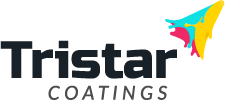
Tristar Coatings is pleased to offer a wide variety coating testing services. Our state of the art laboratory coupled with our experienced in-house chemists Tristar can provide quick and accurate results for your products.
Liquid Paint Tests
Viscosity plays a large role in application properties of liquid paints. We can determine current viscosity and recommend adjustments based on application method if needed.
Moisture in solvent-based paints can reduce stability and can reduce the shelf life of products, even in sealed containers. In some products it can also reduce overall product film quality (gloss, blushing) but when mixed in an isocyanate containing product will impact film integrity and give pinholes. When sealed in a container with isocyanates, water will also react to produce CO2 gas and pressurize the container dramatically.
The pH of a water-based or water-reducable product is very specific and unique to each product. Going outside of the recommended range in the liquid product can have an impact on film performance, application performance and stability. Water used in the viscosity reduction can also impact the pH of the product, and these can all be tested in the Tristar Lab with recommendations given if needed.
Resistivity is a critical factor when applying a paint using an electrostatic process. Modifications can be done on existing paint as needed once the requirements are determined for each application and spray setup.
The flashpoint of a product is typically given as a theoretical value based on the solvents involved. These values are not always accurate and it is possible the product could be shipped/stored as combustible instead of flammable which could reduce costs/storage requirements
Opacity of paint describes how thick of a coating is required to fully hide the surface you are painting. A higher opacity paint will require less build and would therefore require less to complete the same job. Opacity is reduced when the liquid paint is thinned with solvent. This can be tested to ensure good opacity at a given viscosity.
Sag refers to how thick a coating can be before it starts to run or drip off a verticle surface. A higher sag will be able to provide a higher film thickness. This is due to the rheological properties of the liquid paint.
The % solids of a paint refers to the amount of paint remaining on the surface after the product dries/cures. Higher solids products require less to cover the same surface area, but is generally higher in cost and can be more challenging to apply. Higher solids may or may not have higher opacity, it depends on if the solids are coming from the pigments or resins in the product being used. Solids can be reported by weight or by volume.
The grind of a product describes the size of the largest particles in a paint. Very thin films need very small particles or else the final film will not appear smooth. Further, the grind of a product can also describe the stability of a paint as an unstable paint will slowely increase in grind. The higher particle size is also heavier than the smaller sizes and can lead to settling of pigments in a paint.
CONTACT TRISTAR COATINGS FOR MORE INFORMATION ABOUT OUR TESTING SERVICES
* Please include specific testing requirements (ASTM test methods/aerospace specifications) in quote requests if required
